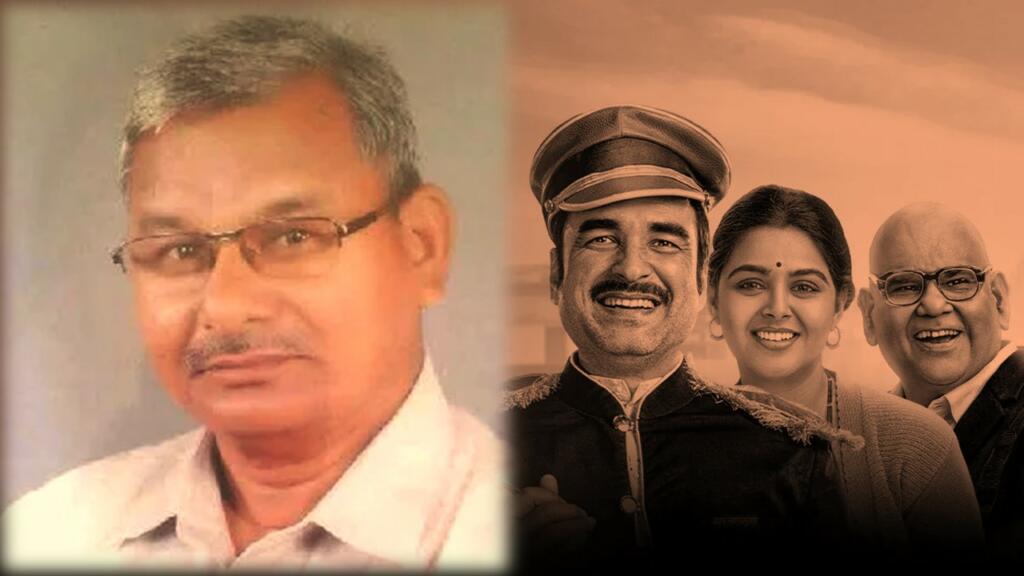This is the story of grit. This is the story of determination. This is the story of a ghost’s attempt to come alive. This is the story of a person’s perilous, two-decade fight with Babus of the socialist era. This is the real story of Lal Bihari, whose death story has been immortalised by Pankaj Tripathi.
Lal Bihari’s struggle
In 1977, Lal Bihari wanted to obtain some documents to apply for a bank loan. When Lekhpal told him that he was dead, Bihari thought he was joking. Things escalated quickly, and Lal Bihari was now citing his previous meetings with the same Lekhpal as proof of his living status. “That may be so, but according to my books, you’re dead,” replied Sarkari Babu.
Lal Bihari got to know that one bigha of land had been devolved to his cousins. For this purpose, it was necessary to declare him dead, which his relatives did by bribing the officials. Price? Rs 300.
Also read: Article 370 and more: Under these circumstances, government can legally shut down Internet
Lal Bahadur went to a lawyer, who laughed at him, saying, ‘A dead man has come to me.’ Even his neighbours laughed at him, calling him a ghost. Lal Bihari tried a government inquiry, but the same officials who took bribes for declaring him dead would also run the inquiry.
3 years had passed, and Lal Bihari was losing hope. One day, a politician named Shyam Lal Kanojia advised Lal Bihari to call himself “Mritak” (dead person). He began to introduce himself as Mritak Lal Bihari. In 1980, he started an association of people like him.
Also read: Courts are clear about the fate of Rohingyas, it’s the government that is not
Did all kinds of drama
Then began his quest to get his name on government documents. He kidnapped his 5th-grade cousin Baburam just to get his name registered in the FIR. The plan failed because, they did not reported to the police. He was advised by a journalist to drop the child off at home, and in return, he would publish his story.
After the story was published, an MLA read the news and raised it in assembly. Encouraged, Lal Bihari sat for a Dharna outside the assembly. Although it did not work, Lal Bihari was able to obtain a visitor’s pass for the assembly. In one of his visits, he tried to ape Bhagat Singh and threw assembly bills on the floor. The man was constantly screaming “mujhe zinda karo.” Without any name in the document, he was kept in jail for 7 hours for it.
Later, he bribed a Policeman of Rs 500 for registering his name in an FIR for rioting. When the policeman realised his intention, he refused. His wife even applied for a widow’s pension. Logic dictated that pension officials would decline, stating that he was alive. Alas! they did deny the pension, but did not mention his living status in reasoning.
Also read: Article 2(33) has glaring loopholes in it and every juvenile monster benefits from it
The only option was to contest elections, so he did. In 1988, his opponent was VP Singh, and the next year, it was time for Rajiv Gandhi to fight against Mritak. Against VP Singh, Lal Bihari even secured 1,600 votes for himself. He even demanded to cancel the election since he was dead, but to no avail.
Lal Bihari grabbed national headlines and was finally accepted as alive in 1994. Lal Bihari was so connected with family values that he decided to return the land for which he fought for 17 years to the very uncle who declared him dead.
Castigating remarks by Allahabad High Court
Meanwhile, an uncountable number of more such victims had joined his association. Rising awareness forced Time Magazine to take cognizance of it. After that, the matter reached the Allahabad High Court. Interestingly, both parties were on the same page. During the course of the hearing, the number of such complaints rose from 50 to 60 per year to 50 to 60 per day.
Also read: The Case that gave bureaucrats an edge over lawmakers, but it remains unused
In some cases, fake court orders were used to get such things done. The Court termed it a violation of Article 21 and described the phenomenon as “terrorism by Babu.” It referred to Munshi Premchand’s short stories and emphasised that the phenomenon is age-old.
Even the Chief Judicial Magistrate told the court that he could do nothing more than be an abject spectator. In its order, the High Court asked the government to punish the officials responsible for these kinds of cases. Lal Bihari showed that even if one person stands up against collective lies, he can shake the system.
Support TFI:
Support us to strengthen the ‘Right’ ideology of cultural nationalism by purchasing the best quality garments from TFI-STORE.COM
Also Watch:
https://www.youtube.com/watch?v=_TrOAaRi_hI
